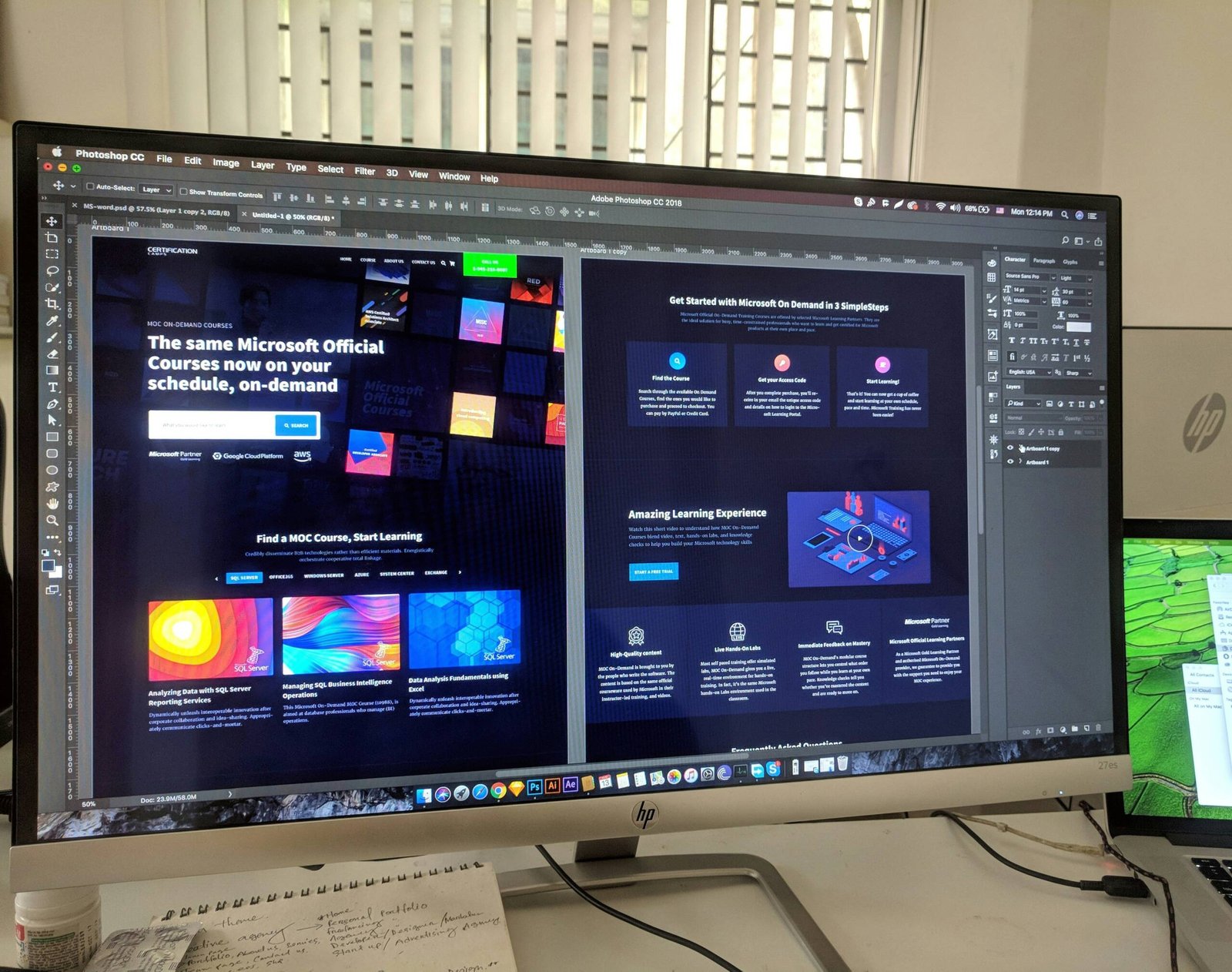
Introduction
Becoming a professional web designer requires a combination of creativity, technical skills, and a deep understanding of user experience. In this blog post, we will explore the steps you can take to become a successful web designer.
Educational Background
While a formal education is not always a requirement to become a web designer, having a degree or certification in web design or a related field can greatly enhance your skills and marketability. Consider pursuing a degree in graphic design, computer science, or web development to gain a solid foundation in the principles of design and programming.
Technical Skills
To excel as a web designer, it is crucial to have a strong grasp of various technical skills. These include:
- HTML and CSS: HTML (Hypertext Markup Language) and CSS (Cascading Style Sheets) are the building blocks of web design. Familiarize yourself with these languages to create the structure and style of web pages.
- Responsive Design: With the increasing use of mobile devices, it is essential to design websites that adapt to different screen sizes. Learn responsive design techniques to ensure your websites look great on all devices.
- UI/UX Design: User interface (UI) and user experience (UX) design focus on creating intuitive and engaging interfaces. Understanding the principles of UI/UX design will help you create websites that are both visually appealing and user-friendly.
- Graphic Design: Having a good eye for design and proficiency in graphic design software such as Adobe Photoshop and Illustrator will enable you to create visually stunning websites.
- JavaScript: JavaScript is a programming language that adds interactivity and functionality to websites. Learning JavaScript will allow you to create dynamic and interactive elements on your web pages.
- Content Management Systems (CMS): Familiarize yourself with popular CMS platforms such as WordPress, Joomla, or Drupal. These platforms make it easier to build and manage websites.
Building a Portfolio
One of the best ways to showcase your skills as a web designer is by building a portfolio. Start by creating your own website, where you can showcase your best work. Include a variety of projects that demonstrate your range of skills and creativity.
If you are just starting out and don’t have many client projects to showcase, consider creating mock-up designs or redesigning existing websites to demonstrate your abilities. You can also contribute to open-source projects or volunteer to design websites for non-profit organizations to gain experience and build your portfolio.
Continuous Learning
The field of web design is constantly evolving, with new technologies and trends emerging regularly. To stay competitive as a web designer, it is crucial to keep learning and expanding your skillset. Stay updated with the latest design trends, tools, and techniques by following industry blogs, attending web design conferences, and taking online courses.
Additionally, seek feedback from other professionals in the field. Join web design communities, participate in forums, and collaborate with other designers to learn from their experiences and improve your own skills.
Networking and Building Relationships
Networking is an essential aspect of any profession, and web design is no exception. Building connections with other professionals in the industry can lead to job opportunities, collaboration, and mentorship.
Attend industry events, join web design organizations, and engage with other designers on social media platforms. Share your work, provide valuable insights, and participate in discussions to establish yourself as a knowledgeable and skilled web designer.
Freelancing or Employment
Once you have honed your skills and built a strong portfolio, you have the option to work as a freelancer or seek employment as a web designer.
Freelancing offers flexibility and the opportunity to work on a variety of projects for different clients. It requires self-discipline, excellent time management skills, and the ability to market yourself effectively. Create a professional website, establish a strong online presence, and actively seek clients through networking and online platforms.
If you prefer the stability of a regular paycheck and working as part of a team, you may choose to seek employment with a web design agency or in-house design department. Update your resume, prepare a compelling portfolio, and apply for web design positions in companies that align with your interests and goals.
Conclusion
Becoming a professional web designer is a journey that requires a combination of technical skills, creativity, continuous learning, and networking. By investing time and effort into developing your skills and building a strong portfolio, you can position yourself for success in this dynamic and rewarding field.


